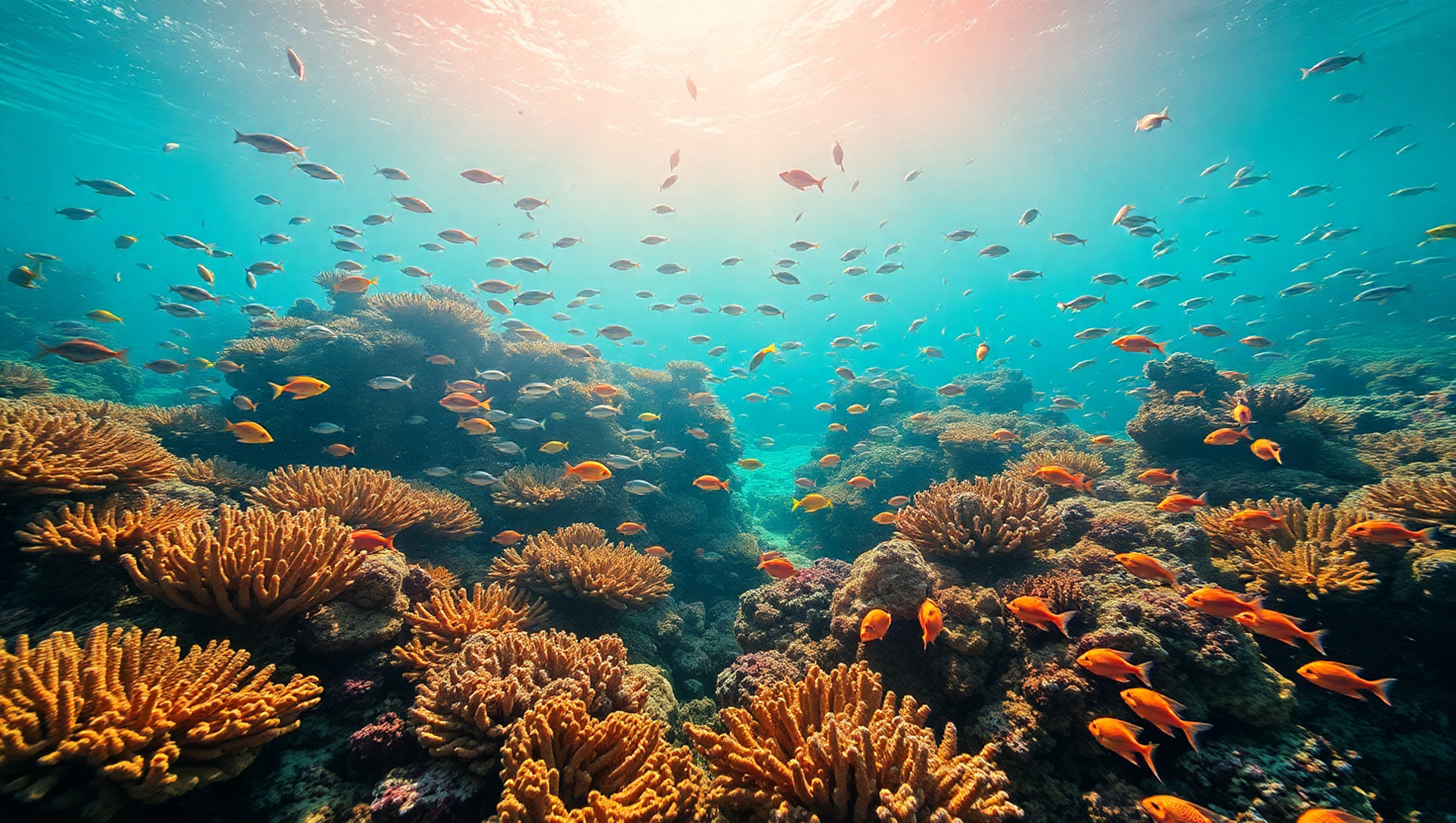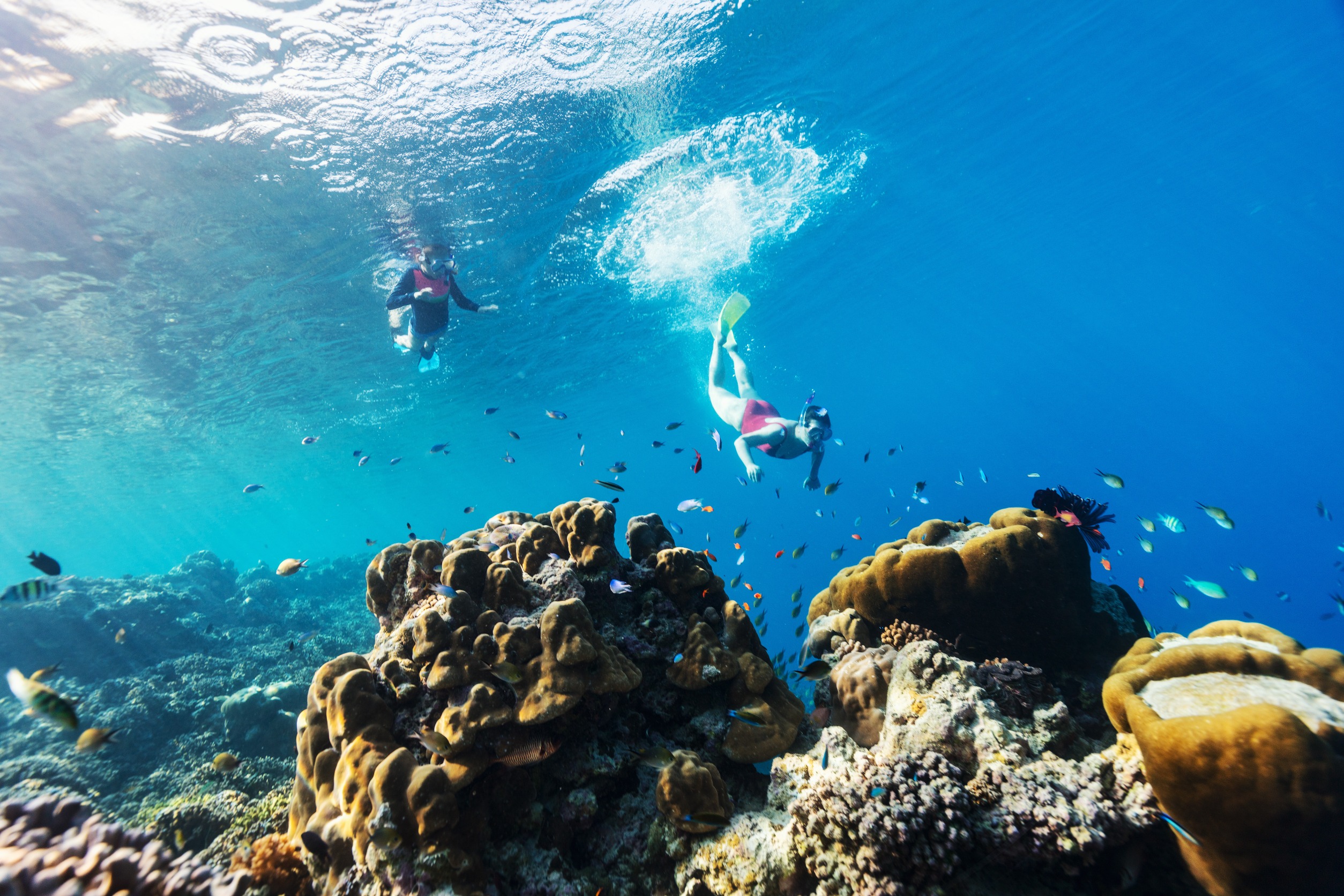5 Interesting Facts About Coral Reefs

Coral reefs are known as the rainforests of the sea. The Great Barrier Reef covers some 133,000 square miles of the Coral Sea off the coast of Queensland, Australia. While most of us may never have the opportunity to see the Great Barrier Reef in person, we can learn more about coral reeds and how the ecosystem supports marine life worldwide.
1. Hundreds of Coral Species
Coral is a unique structure that makes up the coral reef ecosystem. Coral has been dated to 400 million years ago in the fossil ledger. In the last 25 million years, these organisms have evolved into the modern coral reef. There are over 6,000 types of corals in the world. The Great Barrier Reef houses only 600 types within its realm. Coral comes in many colors: red, purple, and yellow, with browns and greens being the most common. Coral reefs keep our ocean healthy by providing food, shelter, resting, and nesting grounds for one-quarter of the earth’s marine life.
2. Coral are Animals
Although corals appear to be plants, they are animals. Coral reefs begin as small polyps with a mouth and stomach. Polyps have combined for thousands of years to support each other, forming the coral reefs in our ocean. Coral is a cousin to the jellyfish or sea anemone, also classified as animals. Coral reefs support marine life and the more than 1 billion people on the coast.

3. Coral Supports a Quarter of the Ocean
It’s estimated that coral reefs provide over $10 trillion in benefits annually. A coral reef is like an underwater forest supporting the ocean floor. The corals that connect provide a habitat for algae to octopuses. When the coral reefs can’t do their job, it risks every marine species that relies on the coral reef for protection or food. Corals also protect the beaches by reducing damaging waves. Without these, over half a billion people who depend on the reefs would be left without coastline protection, food, & jobs.
4. Coral Eat Small Fish/Plankton
Like jellyfish, coral has stinging cells to catch floating plants and plankton to eat. Coral has a symbiotic relationship with algae. Algae is a food source for coral. The coral protects the algae and assists reef-building coral through photosynthesis to provide food through the sun. Most coral tends to be nocturnal, so aquariums keep tanks with coral darker.
5. Climate Change is a Huge Threat to Coral Reefs
One of the most alarming facts about coral reefs is how fast they’re declining under climate change. The ocean’s chemistry changes as the ocean absorbs more carbon monoxide, dioxide, and other fossil fuel gases. The waters are warmer. This thermal stress leads to coral bleaching, in which the zooxanthellae are released from the coral’s tissue. The algae that colored the coral are gone, so the skeleton of the coral can be seen. The coral begins to starve. While bleached coral is not dead, it can take weeks to recover only if temperatures in the ocean lower. Many reefs cannot keep up with the changing waters, so coral is routinely lost, reducing the size of coral reefs.
Learn More About Coral Reefs
Coral reef ecosystem facts seem very vague when you don’t understand the relationship between coral reefs and marine habitats. We believe that when you see a natural coral reef in the ocean, you become a better steward for future generations. Take a whale-watching tour to learn about coral reefs, whales, marine life, and more to understand why we must do our part to reduce climate change and pollution.
